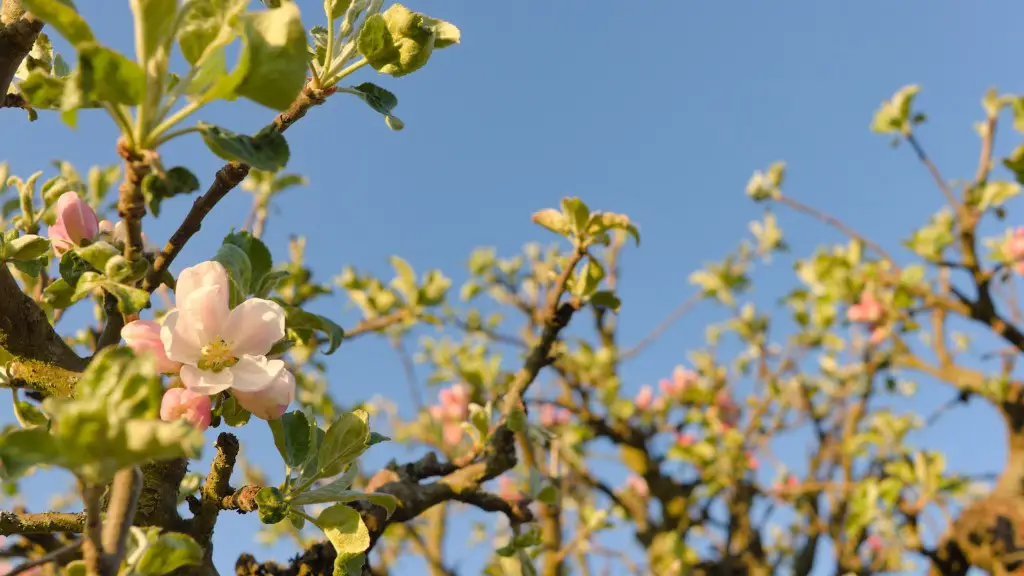How to Paint a Palm Tree Easy
Many people struggle to paint palm trees. For some, the effort to recreate the graceful curves and twists of a palm’s fronds may seem daunting and in some cases, even impossible. Rest assured that painting palm trees can be done with a few simple steps and a little bit of practice.
To begin with, this painting project requires very few supplies. A canvas, paintbrushes, acrylic paints, graphite paper, a pencil and a ruler are all that’s needed. The first step is to draw the outline of the palm tree on the canvas. To do this, sketch the trunk with a pencil. Using the ruler, draw a curved line from the bottom of the trunk to the top. This curved line should be about four or five inches in width. The next step is to draw the palm tree’s leaves (or, fronds) using the pencil. If the pencil ends up making too many lines and looking too busy, use the eraser to clean it up a bit. Once the outline is finished, start laying in the colors with the paintbrushes. For the leaves, the technique of blending the colors is essential. Start with the darkest color and work your way up to the lightest. To do this, lightly dry brush the darker colors, and then progressively add lighter colors until the desired shade is achieved. Make sure to use shading and highlights to add dimension to the painting. With a bit of practice, the end result should be a realistic-looking palm tree.
Adding Details
Adding the right details to your palm tree painting can be a challenge. There are great details to consider when creating your painting which will help you achieve a realistic look. To give your painting the perfect look of reality, the fronds need to be fleshed out with a few more detailed touches. A few simple techniques can give a brilliant depth to the tree. The fronds can be filled in with shades of lighter and darker greens for a realistic look.
Furthermore, adding small highlights and shading to the trunk and fronds will also help to further add realism. The trick here is to focus on the shadows and highlights the tree casts. When you look at the shadows, focus on their shape and color. You can use light gray to create the highlights, and dark gray for the shadows. Depending on the direction of light, you may use a slightly different color combination. Adding these simple touches to your painting will make it look incredibly realistic.
If you want to add more details, you can try adding small leaves and branches to the tree. This is a great way to make the tree look fuller and more natural. Make sure to add these details in the same color and shading as the rest of the tree to give it a unified look. With a few simple touches, you can achieve an incredibly realistic palm tree painting.
Tips for Creating a Palm Tree Painting
If you’re new to painting, there are a few tips that can help you create a great palm tree painting. The first one is to start with a light sketch. This will ensure that the tree looks balanced and well-proportioned. Once you have the sketch drawn out, you can start laying in the colors. For the leaves, it’s important to use a dry brush technique and use a few different shades of green to create a realistic look.
When adding the details to the tree, take your time. Be sure to fill in all of the gaps with smaller details to make it look believable. Finally, it’s important to step back and look at the tree from a distance to see if it looks natural. This will help you ensure that everything is balanced and the colors are blended correctly.
Practice Makes Perfect
Creating a realistic palm tree painting takes a lot of practice. It’s important to be patient with yourself and go slow. If a painting doesn’t turn out the way you planned, that’s okay. Just take it as a learning experience and adjust the colors and techniques next time. With enough practice, you’ll be able to create a beautiful, realistic palm tree painting.
Conclusion
Painting a realistic palm tree is easier than you think. With a few simple steps and a bit of practice, you’ll be able to replicate the graceful curves and twists of a palm’s fronds with ease. Be sure to pay attention to the details and take your time. With patience and practice, you’ll be able to create amazing palm tree paintings!
Framing a Palm Tree Painting
Once you’ve painted your palm tree, it’s important to frame it properly. This will help protect it from the elements and keep it looking fresh for years to come. If your painting is on canvas, you’ll need to have it stretched and mounted onto a wooden frame. This can be done by a professional framing company or you can do it yourself if you have the right tools. Once your painting is in the frame, you’ll need to choose the right matting and backing board to give it an extra level of protection. Choosing the right colors and materials is key to making sure your painting looks amazing.
Preserving a Palm Tree Painting
Once your painting is framed, the next step is to make sure it stays preserved. The best way to do this is to keep it out of direct sunlight. Sunlight will cause the colors to fade and the paints to crack and flake. Additionally, you’ll need to make sure that the temperature and humidity are controlled. If the conditions become too extreme, the painting will be damaged.
Creating a Colorful Background for a Palm Tree Painting
If you really want to make your palm tree painting stand out, a colorful background can go a long way. You can choose to paint a simple sky background or create a tropical landscape, depending on the theme of your painting. If you choose to go with a landscape, be sure to consider the light and shadows. Pay attention to the direction of the light and the shadows it casts. This will help you create a realistic and believable painting.
Display Ideas for a Palm Tree Painting
Once you’ve painted and framed your palm tree painting, it’s time to decide how to display it. Choosing the right display is important and can dramatically change the look of the painting. For example, if you choose to hang the painting in a living room, it can create an eye-catching focal point. Alternatively, if you choose to go with a simpler display option, like a floating shelf, you can create a subtle yet stunning look.
No matter what display option you choose, your palm tree painting is sure to be the star of the show. With a few simple steps and a bit of practice, you can create a beautiful, realistic painting that you’ll be proud to show off!


